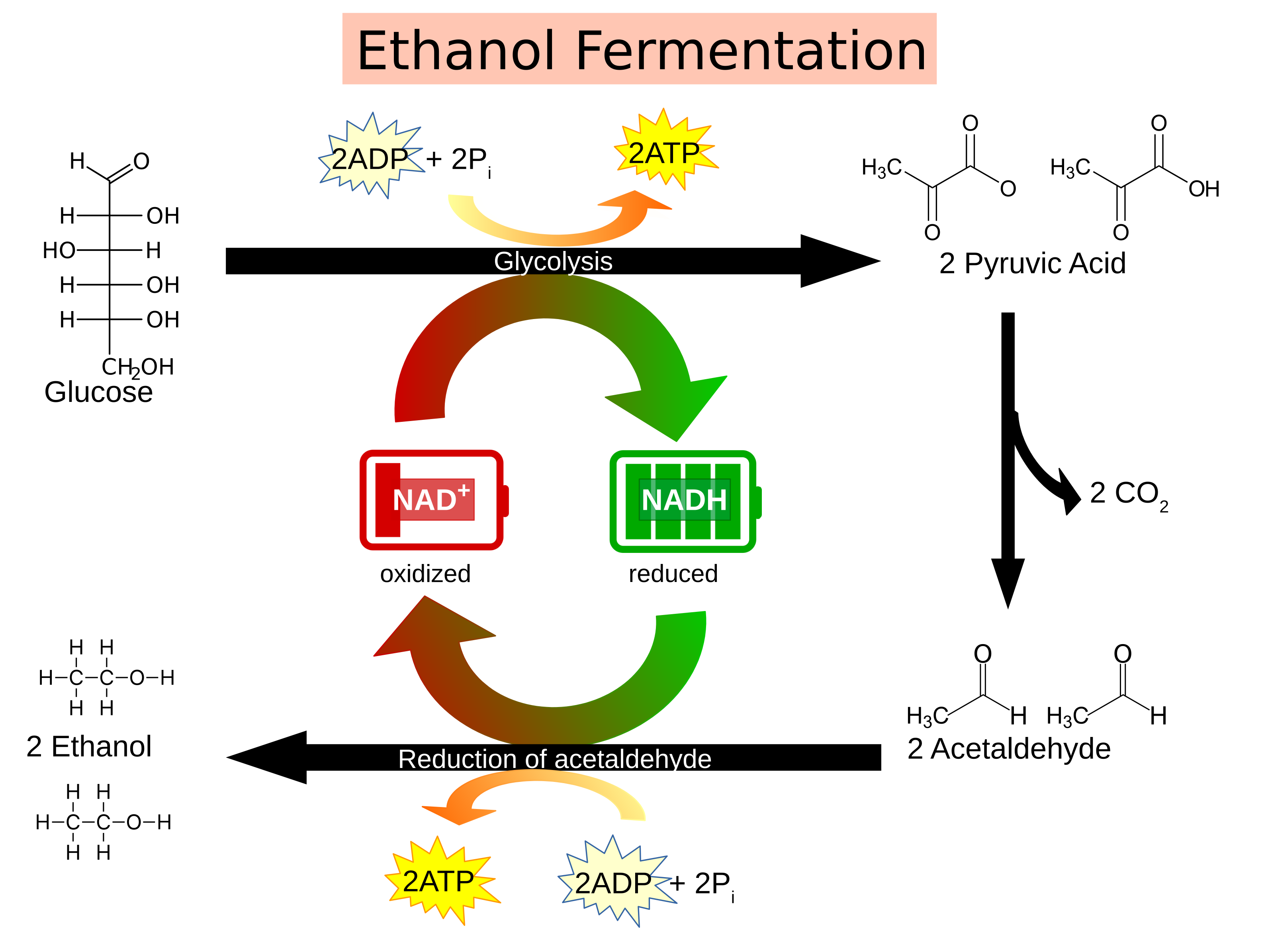Products of fermentation [ edit ]
by Admin
Posted on 25-10-2023 11:07 AM

Stanbury, p. F. , whitaker, a. , and hall, s. J. “an introduction to fermentation processes. ” principles of fermentation technology, 3rd edition, butterworth-heinemann, elsevier ltd. , 2017, pp. 1–20. Hutkins, r. W.
 “bread. ” microbiology and technology of fermented foods, 2nd edition, john wiley & sons ltd, 2019, pp. 301–342. Lee, b. H. “yeast-based processes and products. ” fundamentals of
food
biotechnology, 2nd edition, john wiley & sons ltd, 2015, pp. 207–237. Hui, y. H. , et al. “fermented cereal products. ” handbook of food and beverage fermentation technology, marcel dekker, inc. , 2004, pp. 712–799.
“bread. ” microbiology and technology of fermented foods, 2nd edition, john wiley & sons ltd, 2019, pp. 301–342. Lee, b. H. “yeast-based processes and products. ” fundamentals of
food
biotechnology, 2nd edition, john wiley & sons ltd, 2015, pp. 207–237. Hui, y. H. , et al. “fermented cereal products. ” handbook of food and beverage fermentation technology, marcel dekker, inc. , 2004, pp. 712–799.
History of the use of fermentation [ edit ]
Fermentation microbiology and biotechnology. Third edition. 3, illustrated, revised ed. Crc press; 2011. Prajapati jb, and nair bm. The history of fermented foods. Handbook of fermented functional foods, edited by farnworth er, 2nd ed. , crc press, 2017, pp. 1–22. Wang j, liu l, ball t, yu l, li y, xing f. Revealing a 5,000-y-old
beer
recipe in china. Proc natl acad sci u s a. 2016;113(23):6444-8. [ pdf ]
breidt f, mcfeeters rf, perez-diaz i, lee ch.
 Fermented vegetables. Food microbiology: fundamentals and frontiers, edited by doyle mp and buchanan rl, 4th ed. , asm press, 2013, pp. 841-855.
Fermented vegetables. Food microbiology: fundamentals and frontiers, edited by doyle mp and buchanan rl, 4th ed. , asm press, 2013, pp. 841-855.
See also [ edit ]
These examples are programmatically compiled from various online sources to illustrate current usage of the word 'fermentation. ' any opinions expressed in the examples do not represent those of merriam-webster or its editors. send us feedback about these examples.
A program of systematic strain discovery and development conducted with today’s tools — and bolstered by computational insights based on the wealth of genomic data now available for tens of thousands of microbial species — could yield entirely new candidates for microbial protein production, in addition to providing a roadmap for continued improvement of existing strains. High-throughput methods of strain selection, adaptation, screening, and engineering enable innovators to iterate new strains with greater speed and precision. They can select for more nuanced attributes, such as precise flavor-enhancing metabolite profiles, rather than simple traits like growth rates or temperature tolerance.
Genetic engineering (or modification) refers broadly to the cutting and pasting of the dna genome to create cells with targeted traits. The efficiency of genetic engineering has improved with advanced gene editing techniques like crispr. Genetic engineering has enabled the creation of microorganisms with more desirable traits than their wild-type cousins. For instance, yu and co-workers generated a strain of clostridium tyrobutyricum that produced higher yield of butanol, a type of sugar found in many fermented food, than its wild-type cousins. Microorganisms can also be genetically engineered to produce just one end-product with high purity. This makes them more advantageous than their wild-type counterparts, which usually produce a mixture of end-products.
Most online reference entries and articles do not have page numbers. Therefore, that information is unavailable for most encyclopedia. Com content. However, the date of retrieval is often important. Refer to each style’s convention regarding the best way to format page numbers and retrieval dates. In addition to the mla, chicago, and apa styles, your school, university, publication, or institution may have its own requirements for citations. Therefore, be sure to refer to those guidelines when editing your bibliography or works cited list.
Ethanol [ edit ]
Jeremy m. Berg, john l. Tymoczko and lubert stryer, biochemistry, 6th edition, w. H. Freeman and company, 2007, pages 205-237. Fugentius lugemwa, decomposition of hydrogen peroxide, chemical educator, april 2013, pages 85-87. Daniel q. Duffy, stephanie a. Shaw, william d. Bare, kenneth a. Goldsby, more chemistry in a soda bottle, a conservation of mass activity, journal of chemical education, august 1995, pages 734-736. Jessica l epstein, matthew vieira, binod aryal, nicolas vera and melissa solis, developing biofuel in the teaching laboratory: ethanol from various sources, journal of chemical education, april 2010, pages 708–710.